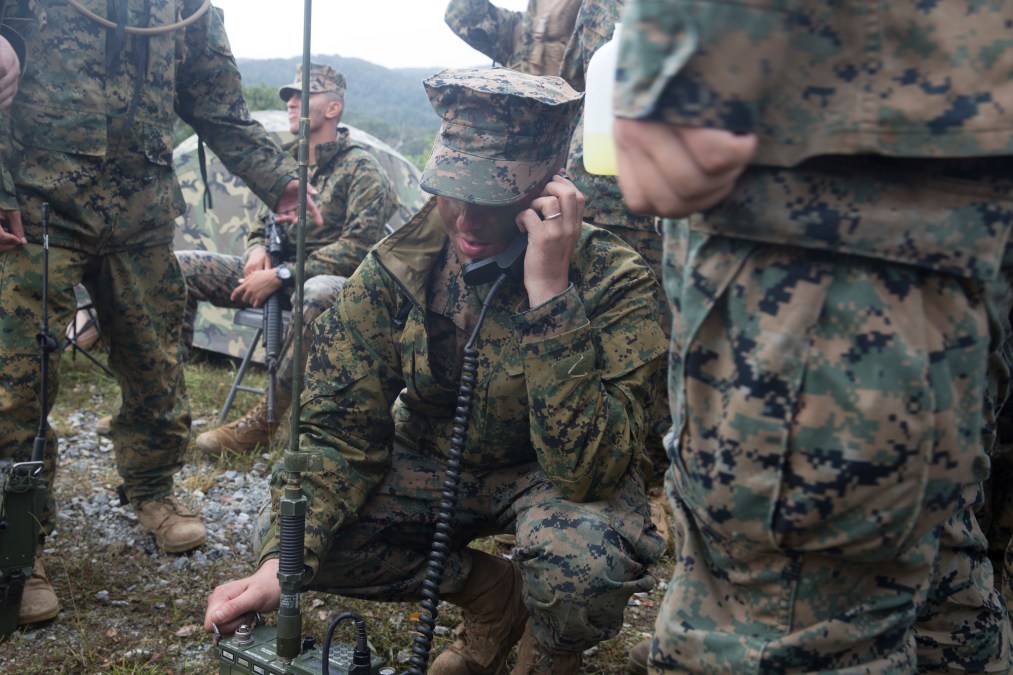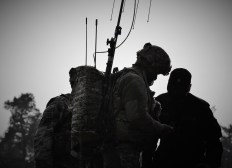Marine Corps outlines priorities for improving tactical data and communications capabilities

The Marine Corps is undertaking several efforts in the next two years to improve how it leverages data at the tactical edge to make it more effective in highly dynamic environments.
Self-described as America’s 9-1-1 force and thus needing to be extremely mobile and agile, the Corps needs to flow data rapidly and understand it.
“Force design, what does that mean for me as the deputy commandant for information? If I could sum it up in one sentence what this is all about for me and what I owe the commandant and our beloved Corps and our incredible Marines, it’s the fusion and correlation of data to drive outcomes,” Lt. Gen. Matthew Glavy, deputy commandant for information, said Thursday at the Marine Corps IT Day conference hosted by AFCEA’s Quantico chapter.
Glavy was referencing Commandant Gen. David Berger’s vision for modernizing the Corps known as Force Design 2030.
At a very high level, Glavy said some work the service has done in recent years is to improve the transport of data. He likened the old way to traveling down local routes on a long road trip as opposed to the new and improved way akin to taking the interstate; essentially providing a bigger pipeline or highway for data to transit.
Marine Corps Systems Command, the service’s main equipping body, also has several priorities in fiscal 2023 and 2024 aimed at improving IT and communications capabilities to make the force more expeditionary.
One is improving networking on the move.
“If you’re in a tent, if you’re in an area where you can be targeted, you’ll be targeted. We’ve got to move, we got to keep moving,” William Williford, executive director of Marine Corps Systems Command, said at the conference.
Marine expeditionary units don’t just want mounted capabilities in their vehicles, he noted. They also want the flexibility to take them out for dismounted operations.
There is also a need to integrate low-Earth orbit, medium-Earth orbit and geosynchronous orbit satellite communications data.
“We’ve got different players in each one of those spaces, but the data has to be integrated so that we can move it around and get that data to the right place when it’s needed,” Williford said. “That’s going to be critical for us moving forward.”
Just as important, position, navigation and timing (PNT) capabilities have to be untethered to those assets for added redundancy if systems are jammed.
Cloud capabilities at the edge will also be critical in future conflicts and they are a top priority for Marine Corps Systems Command (MARCORSYSCOM) in the next two years.
“We’ve got to have disconnected ops in the cloud environment to be able to do that downrange,” he said. “Cloud in the tactical environment I think about is I download my mission, I carry the cloud with me, I go forward, I operate in the cloud and when I’m at a point that I can reconnect to the mothership, I reconnect and I get an idea of what’s going on and what’s my next mission that I’ve got to get into.”
Electronic warfare will be critical as well, especially in defeating conventional systems.
The Corps can’t afford to rely on matching enemies missile for missile, Williford said. Non-kinetic measures such as electronic warfare will be a cost effective way to defeat them.
MARCORSYSCOM is working on the Marine Air-Ground Task Force electronic warfare family of systems (MEGFoS), which includes several portable systems that can be used at the halt, in vehicles or dismounted to sense, defend and attack in the electromagnetic spectrum.
“Electronic warfare is a key enabler to make sure that we can do our work out there both defensive and then electronic attack,” Williford said. “Passively understanding what’s going on out here with the adversary and then electronic attack in those areas” is a critical capability.






